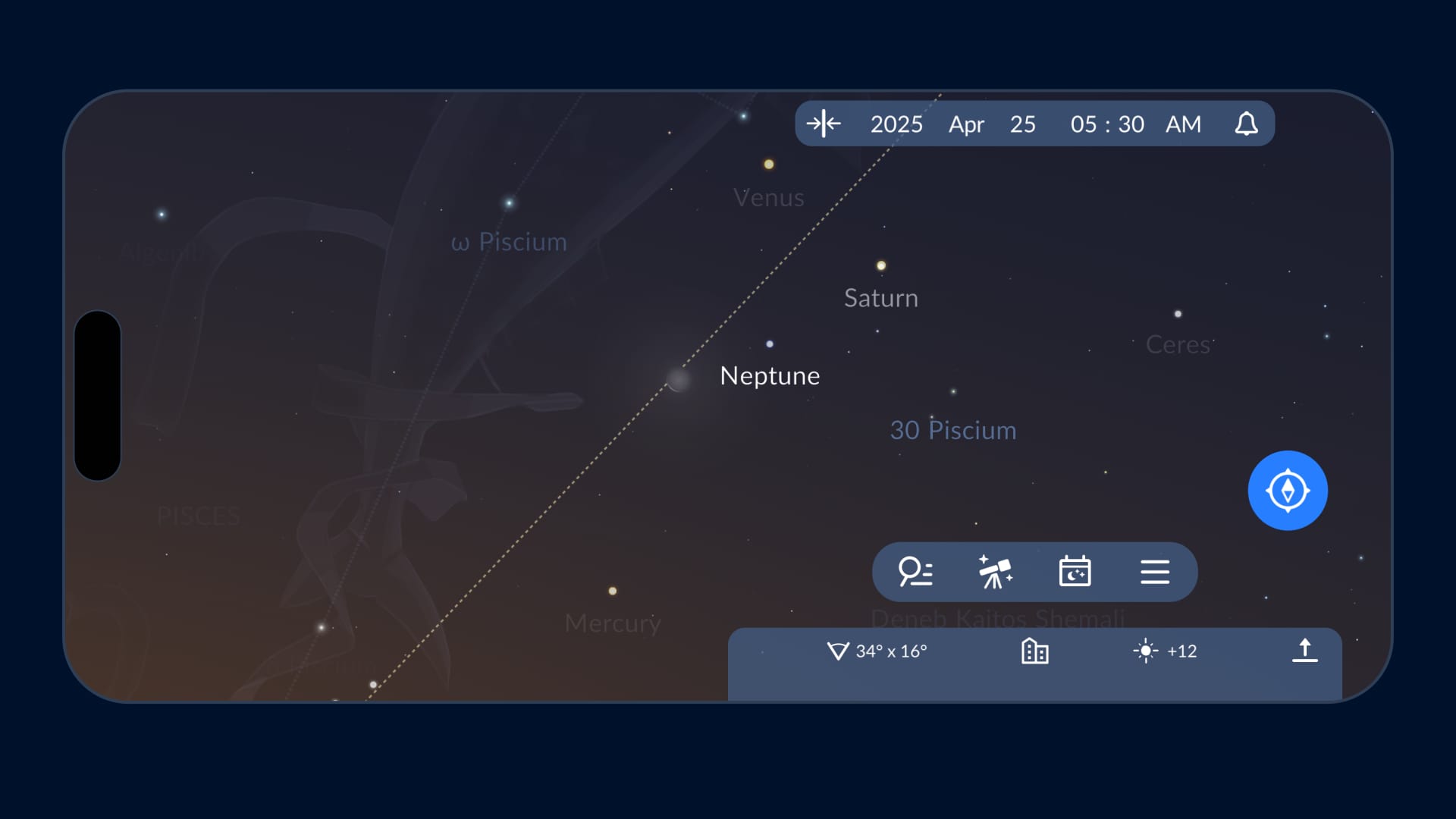Venus Shines At Its Brightest: How To See It
April 2025 offers skywatchers an opportunity to admire the most prominent planet – Venus – at its best and brightest until November 2026. Read on to find out when and how to see the dazzling planet. To locate Venus in the sky easily, download the free Star Walk 2 stargazing app.
Contents
- April 25: Venus shines with the Moon before dawn
- April 27: The morning “star” at its brightest
- Venus at peak brightness in April 2025: bottom line
April 25: Venus shines with the Moon before dawn
On Friday, April 25, 2025, the brilliant planet Venus (mag -4.8) will team up with the Moon (11% illuminated) in the morning sky. Regardless of your location, find the two brightest objects shining together in the eastern sky before dawn. Venus and Moon will be located in the constellation Pisces.
The pair will make an eye-catching sight and offer a great photo opportunity. Not to miss this stunning view, use the stargazing app Star Walk 2 to identify when the Moon and Venus rise and set in the sky above your location. Nearby, you'll also be able to see Saturn, Mercury, and Neptune, making for a planetary alignment. This celestial event will be best visible from the Southern Hemisphere – check out our dedicated article for all the details.

April 27: The morning “star” at its brightest
On Sunday, April 27, the gleaming “morning star” will reach its greatest brilliancy. Venus started this month at a magnitude of -4.3, and at its peak brightness, the planet will glow at a spectacular magnitude of -4.8 (smaller numbers mean brighter objects). Our “sister” planet will appear to shine so brightly that it will be almost impossible not to see it with the naked eye, even as the Sun begins to rise. If you have sharp eyes, you'll be able to see the planet even in the daytime. Venus is the 3rd brightest object in the night sky, after the Sun and Moon. At peak brightness, it will outshine the brightest star in the entire night sky – Sirius.
No need to wait until April 27 to start observing Venus — it will shine brightly throughout late April. After that, it will gradually fade and won't reach this level of brightness again until November 2026.
The maximum brightness of Venus is also called the greatest illuminated extent. Such a title describes a compromise between the planet’s increasing apparent size and the diminishing illuminated portion of its disk (illuminated phase). Interestingly, Venus appears most brilliant in our sky at its crescent phase (about 25% illuminated).

Venus at peak brightness in April 2025: bottom line
Late April 2025 is the best time to observe Venus! Shining at an impressive magnitude of -4.8, the planet will light up the morning sky alongside the Moon, Saturn, Mercury, and Neptune. Look for Venus just before sunrise — it will appear on the eastern horizon as the dazzling “morning star.” To make it easier to locate Venus and other objects around it, use the free Star Walk 2 astronomy app.
Want to learn more about Venus?
- Read the article: Venus, The Brightest Planet
- Take the quiz: Fun Facts about the Earth's Hot, Toxic Twin Planet

